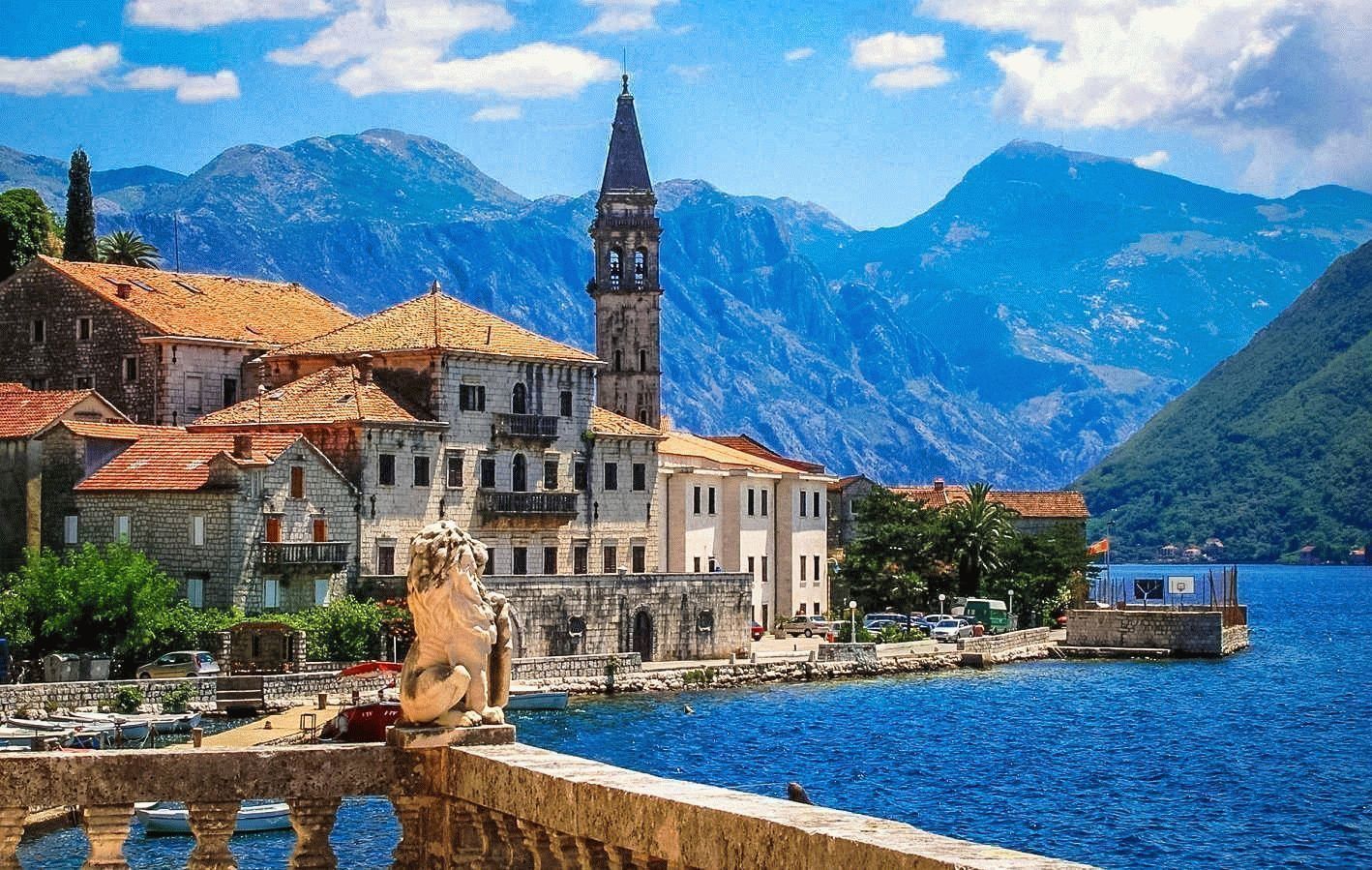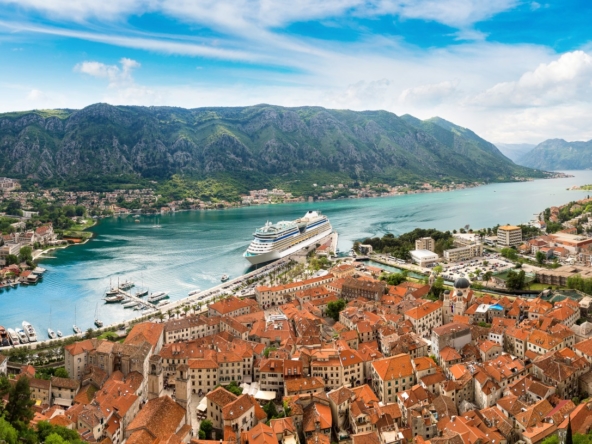According to the opinions of the historians Tivat is the youngest town in Boka Bay, as well as on the Montenegrin coast. There are three different opinions about the name of the town. One directs us to an opinion that Tivat got its name by the name of the Illyrian queen Teuta, who besides having Risan for her capital also had several summer cottages in the immediate vicinity of the town now known as Tivat. The second opinion directs us that Tivat maybe got its name by the names of the Christian saints that ate much alike to the name Tivat, like for e.g. Theudorus, Theodosius, Theodotus, Theodulus or middle-aged names dating from the XII century – Theudo and Teodo. However, we often hear the third opinion, which directly clarifies, that the name Tivat comes from the Celtic word “teuto” meaning town.
Historically known facts show that on the soil of Boka Kotorska, and by that in the history of Tivat, several epochs, important for the development of the town, stand out. Those are: Illyrian, Roman – Byzantium, Serbian, Venetian – Turkish and Austrian reign. The archeological discoveries, the monuments of the old architecture and the written historical sources best testify about the all above-mentioned epochs.
According to the records known to the public, the first epoch in the development of the town Tivat that is characterized by the Illyrian period, ended in 168-7 year B.C. Even though only few archeological discoveries testify about that period, that epoch is historically important because of the fact that, that was the period of the fall of the Illyrian state.
The period of the Roman reign in Tivat was significantly richer than to the one in the Illyrian period. In certain older books, one can find the opinion that in the area better known as Boboviste (near Tivat) there used to be a very old town. It is still not quite proved, but it is thought that on that place in the past there used to be a town called Akruvijum (Acruvium). Such opinions are frequently mentioned even today, but besides Boboviste, there are other localities, in the nearer or further surrounding of Tivat that are also mentioned.
In the historical documentation, Tivat is rarely mentioned as the locality, because it is more connected for the area of Boka Kotorska, and the very town of Kotor, and with the historical facts about Tivat you can often see the definition, Kotor district.
Namely, the Serbian state rules with the area of Boka, that is to say, with Kotor and its district at the end of the 1185. Tivat, until 1370 was under the patronage of the medieval state, on whose head was the Serbian dynasty Nemanjic. According to the certain historical data, the coasts of the Tivat bay at that time became famous because of the development of the spiritual reign. In the XIII century, a Serbian saint, better known as Sveti Sava (St. Sava), establishes a Serbian church. In the same period on the Island Prevlaka (Coating) near Tivat, Sveti Sava (St. Sava), enthrones the bishop of Zeta, and on the remains of the benediction monastery, a monastery dedicated to archangel Mihailo, which today exists in the same place, began to be built. In the year 1420. the coast of Boka Kotorska and the towns that are found on its soil are ruled by the Venetians. Except the Kotor district, Venetian Republic takes over the peninsula Lustica near Tivat as well as the Island Prevlaka (Coating).
The entire period of the Venetian reign which lasts until the end of the XVIII century, the soil of Tivat is characterized by the often battles between the Venetians and the Turks.
Still, the fall of the Venetian Republic in 1797. represents a very significant turnover in the history of Boka Kotorska. After the Venetians, many other foreign authorities rule Boka and also Tivat, for almost twenty years. In the year 1814. the government of Austria, whose reign lasted until the year 1918, is ruling the area of Boka Kotorska and by that also the area of Tivat. As all the other towns of Boka Kotorska and Montenegro, after 1918 Tivat is included in the Kingdom of Serbs, Croats, and Slovenians, later called Kingdom Yugoslavia.
In 1941 Tivat is being occupied by the Nazi troupes. Until the liberation of the town by the partisan squads in November of 1944, German and Italian soldiers dwell.
After the year 1945, after the foundation of SFRJ, Tivat begins to develop as a town, which is primarily, oriented to development of tourism, as a prior economic branch in the former Montenegro and Yugoslavia. Today Tivat is a modern tourist town.
Tivat Legend
A story about a certain town is usually connected to some authentic legends about the origin of certain places, historical or cultural monuments, legacies, islands etc. Nearby Tivat there is a very famous tourist Island Sveti Marko (St. Marko), or the Island Stradioti, as it was called in the past. In the past the Island Sveti Marko in the Tivat bay, was also called the Island Sveti Gavrilo (St. Gabriel), by the church that had the same name, about which, unfortunately there are no written documents.
But, among people the legend that is being retold, still lives. The story about an Island reaches back to the VII century, in the period when the Greek gods have given brave Greek soldiers (the commanders and heads of the Greek fleet), for their marking out in battles and combats, to the Island Sveti Gavrilo (today the Island Sveti Marko). As the legend says, wearied and wounded Greek soldiers, in their galleys, have reached the Island of enchanting beauty, to rest on it and to heal their heroic wounds. Enchanted by the beautiful landscapes, various flowers, pine forest and the sea that surrounded the Island, the Greek soldiers have recovered quickly on the Island Sveti Gavrilo. They have spent their days resting and enjoying in the blessings of nature, but also in the stories that reminded them of the past times: at the horrors of war, demolishing, heroism and conquering…
As the time passed by, the Greek soldiers began to fell guilt conscious because of the evils things they have done, so they decided to say prayers to gods. In their prayers, among other things they asked that the Island on which they have spent their post war days remains forever the oasis of peace and tranquil. Also, the Greek veterans have given their vows then, not to go ever again in conquering, and vowed that they will only defend if they are attacked. As a confirmation of the vows that they gave, the soldiers planted a tree of peace – an olive tree, from which later a great olive garden appeared.
Still, lead by their combat spirit, the Greek warriors soon broke their vows. They continued to conquer territories and to ruin everything that came on their way. Soon after, the angry and cheated Greek gods sent a horrible storm to the Island. The hurricane wind ravaged for days, breaking the soldier’s galleys that were anchored just next to the Island Sveti Gavrilo. The furious sea waves mercilessly sank the ships of the Greek fleet, and only a small number of warriors managed to survive the catastrophe, and to swim to the islands in the Tivat bay on the rafts. When the gods noticed that certain ship wrecked men managed to save themselves, they decided to punish them even more severely, so they have sent an incurable decease to the Island, from which all of them died.
The only thing that was left on the Island to testify eternally about one tine and one terrible event, were the olive trees that Greek soldiers planted.
Because of the tragic death of the Greek veterans, the natives of Tivat decided to call the Island Stradioti, instead of Sveti Gavrilo, because in Greek the word stradiotes means a soldier.


